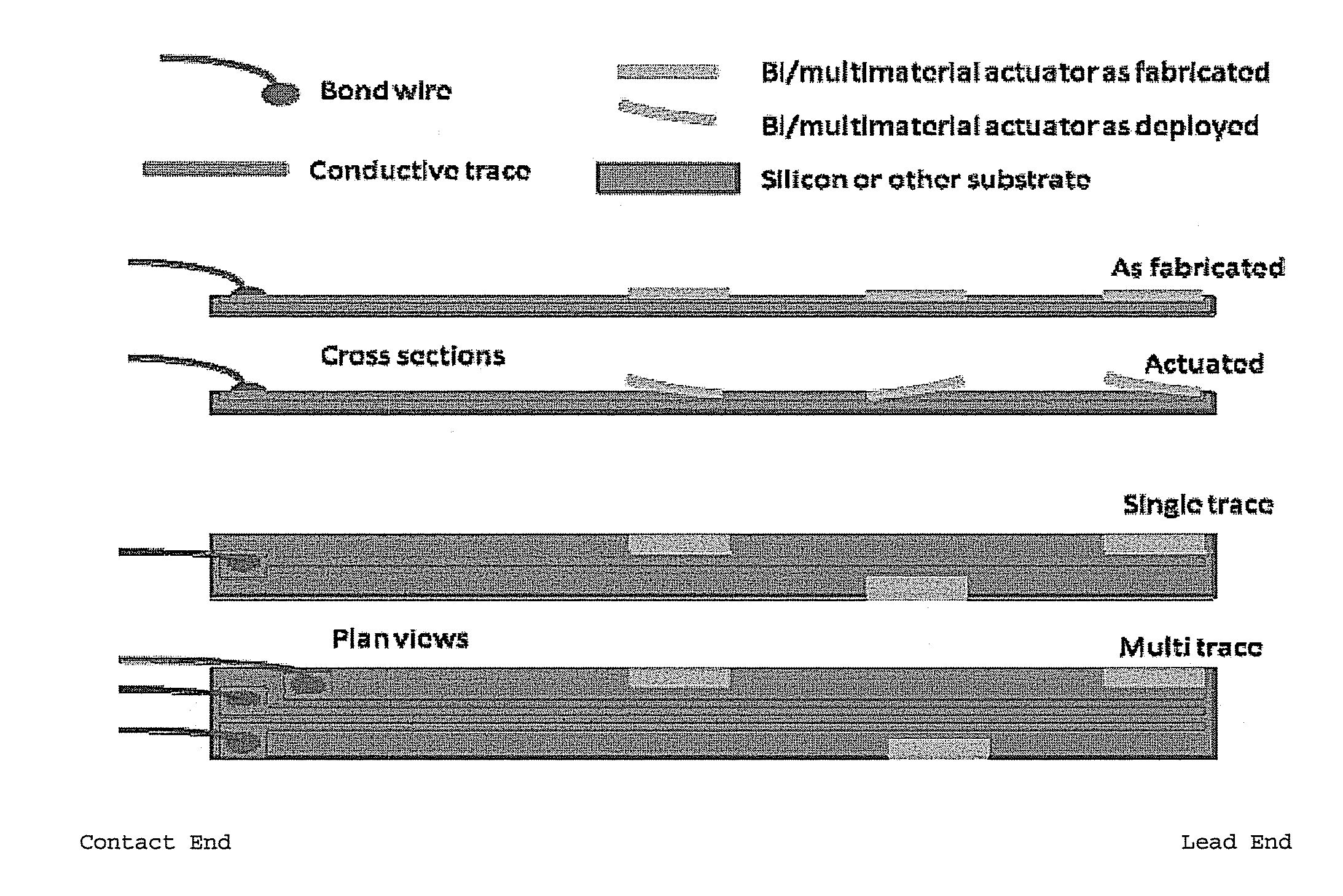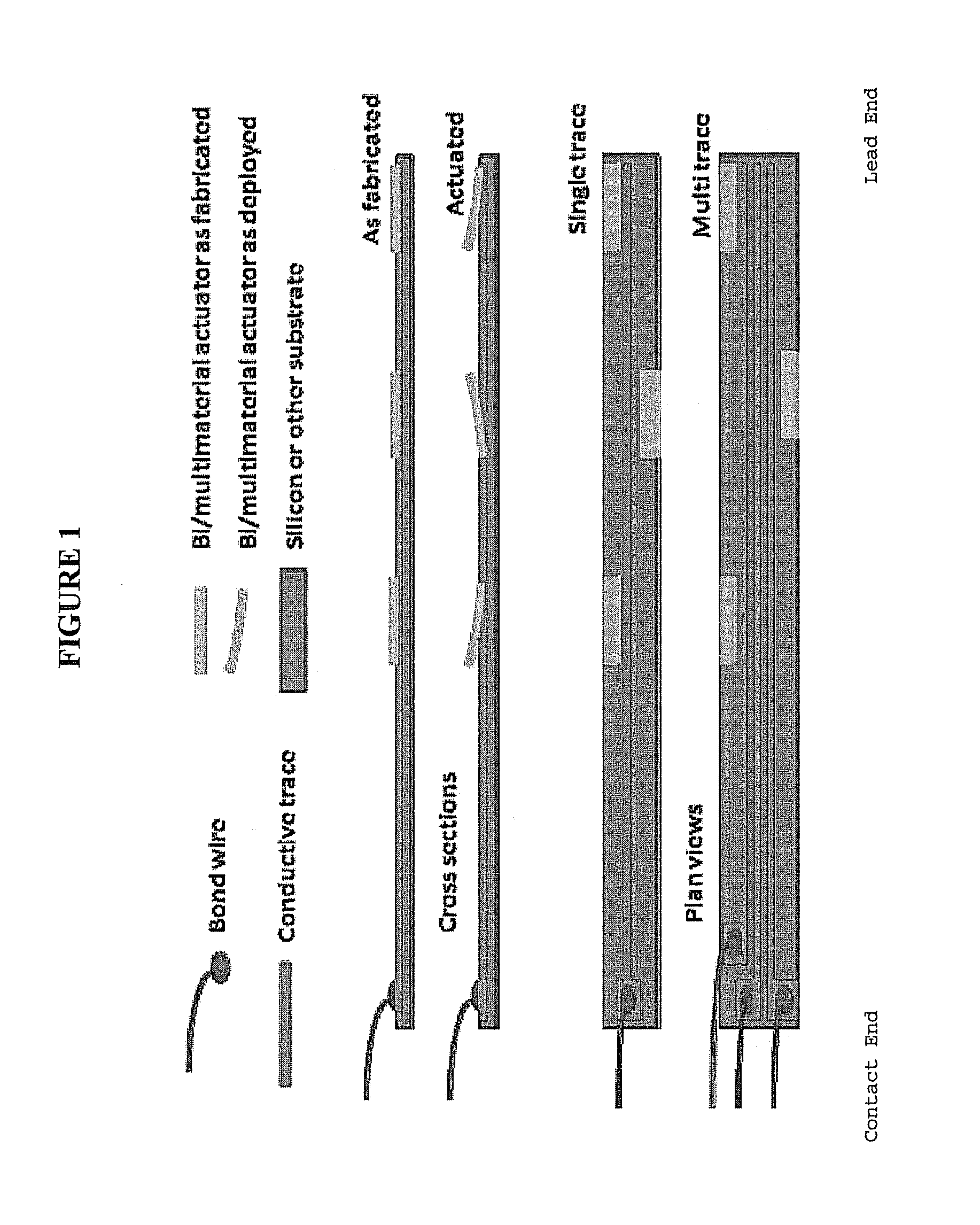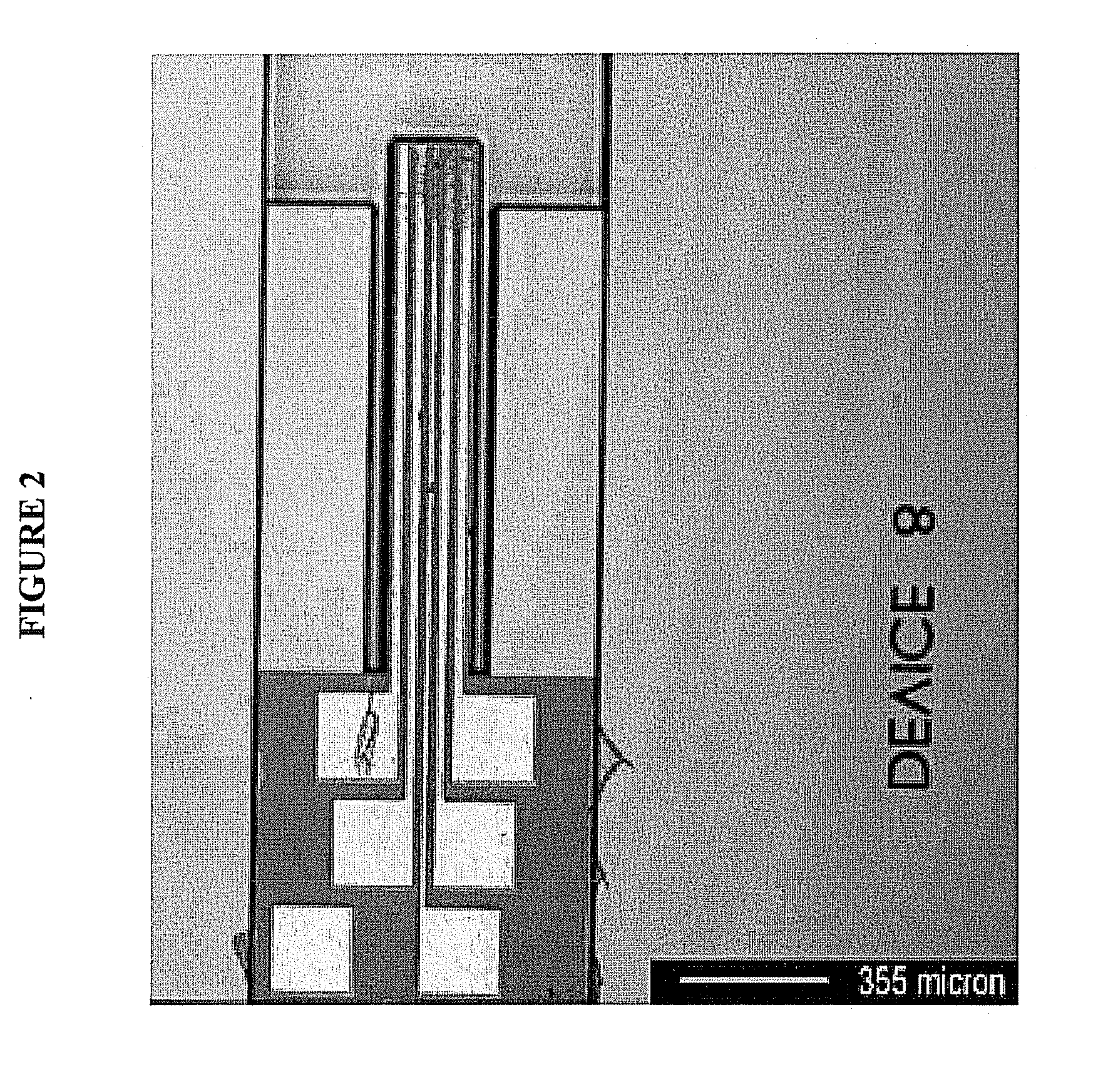Self-Anchoring MEMS Intrafascicular Neural Electrode
a neural electrode and self-anchoring technology, applied in the field of neurology, can solve the problems of electrode placement, painful stimulation, and awkward us
- Summary
- Abstract
- Description
- Claims
- Application Information
AI Technical Summary
Problems solved by technology
Method used
Image
Examples
example 1
Design and Manufacture of a Prototype Intrafascicular Neural Electrode
[0089]Standard MEMS processes are used to construct a series of the neural electrodes of the invention, such as wafer level batch microfabrication methods described in Madou, M., Fundamentals of Microfabrication, CRC Press 1997, ISBN 0-8493-9451-1; Kovacs, G., Micromachined Transducers Sourcebook, McGraw-Hill 1998, ISBN 0-0729-0722-3; Senturia, S. D., Microsystem Design, Kluwer 2000, ISBN 0-7923-7246-8; and Sze, S. M. ed., Semiconductor Sensors, Wiley 1994, ISBN 0-4715-4609-7. Known processes employing oxidation, structural polysilicon growth and metal deposition are combined to generate the stem and barb self-anchoring configuration, as well as the location and design of the conductive traces. A standard single crystal silicon wafer having dimensions of 0.5 mm (thickness) and 100 mm (length) allows for the production of several thousand electrodes of the invention. Depending on the desired dimension of the electr...
example 2
Characterization of the Thermal and Mechanical Self-Anchoring System
[0091]A set of intrafascicular electrodes having a wide variation in dimensional parameters, number and configuration of barb structures, and number and location of conductive traces are analyzed to determine deflections and forces as a function of temperature for the variously configured electrodes. A controlled temperature deionized water bath, followed by a saline bath determines the device “deflectance temperature” within the 5°-30° C. range. The displacements induced by the temperature change are measured using optical microscopy and optical interferometry. The force calculations are determined from the materials properties (modulus) that are extracted form non-device portions of the processed wafers and the dimensions observed by optical microscopy.
example 3
Self-Anchoring Evaluation Using Animal Nerve Tissue
[0092]The self-anchoring capabilities of the intrafascicular neural electrodes are tested using neural tissue derived from animals. American bullfrogs are anesthetized in a bath of 1-3% MS-222 solution for about 20-30 min. The anesthetized frogs are decerebrated, the spinal cord is pithed, and the hindleg peripheral nerves from are removed. The peripheral nerve(s) are stretched to various tensions so that performance of the self-anchoring mechanism is characterized based on device placement under given tensions.
[0093]Based on the results from the anchoring and performance studies using frog nerve tissue, experiments are designed using rodent nerve tissue. Both fixed and fresh samples of rat (female Long-Evans) nerve tissue from the phrenic, sciatic, and tibial nerves, as well as lumbosacral nerve roots are used to develop optimized operating conditions and device design.
PUM
 Login to View More
Login to View More Abstract
Description
Claims
Application Information
 Login to View More
Login to View More - R&D
- Intellectual Property
- Life Sciences
- Materials
- Tech Scout
- Unparalleled Data Quality
- Higher Quality Content
- 60% Fewer Hallucinations
Browse by: Latest US Patents, China's latest patents, Technical Efficacy Thesaurus, Application Domain, Technology Topic, Popular Technical Reports.
© 2025 PatSnap. All rights reserved.Legal|Privacy policy|Modern Slavery Act Transparency Statement|Sitemap|About US| Contact US: help@patsnap.com



